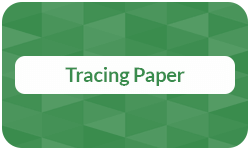
Tracing paper is commonly used in both creative and technical fields, such as art studios, classrooms, and design workspaces. It pairs especially well with various printer paper types, as it allows artists, architects, and design engineers to build on existing works without making permanent changes. Whether layered over printed images or hand-drawn sketches, this low-opacity paper is a great tool for transferring images and patterns from one paper to another or even to different materials.
Definition: Tracing paper
Tracing paper is a semi-transparent paper (or roll) that’s designed to allow images, patterns, or lines from a different printer paper beneath it to be visible through its surface so that it’s traceable. This transparency makes it an essential learning and copying tool for young and experienced artists when it comes to transferring designs, sketches, patterns, and technical drawings onto another paper, material, or surface. Thus, tracing paper should not be missing from an artist’s resource kit.
Copy and print from £0.08
- High-quality copies & prints for any project
- Vibrant color prints or sharp black & white prints
- Online copy and print services delivered straight to your door
Learn more!
Material & history
Historically, the concept of tracing was used by artists of the Italian Renaissance in the 14th century. Tracing paper itself gained popularity with architects and artists centuries later, in the 1880s. When it comes to its materials, tracing paper was originally made from cotton rag or treated wood pulp. Nowadays, wood sulfite pulp is used, meaning that it is made from regular paper pulp (usually wood) but chemically processed to make it translucent and lightweight.
Uses
Tracing paper predates the blueprint process, as well as the diazo process, a copying technique that uses ammonia and light-sensitive diazonium salts, which react to ultraviolet light, to produce blue or black lines on white paper. This chemical method, often referred to as whiteprint, eventually replaced the original blueprint process due to better readability. Now, to its uses:
- Copying
- Blueprints
- Mapmaking
- Floor plans
- Mechanical designs
- Teaching drawing techniques
- Overlays for fine art drawings
- Transferring outlines or elements
- Heat transfer of patterns on fabrics
- Refining drawings without starting over
- Helping beginners trace shapes or artwork
- Sketch paper, also “bumwad” paper (architects)
Tracing paper vs. vellum paper
Even though both papers are semi-transparent, their uses and materials are very different. Vellum paper is traditionally made from stretched animal skin, while tracing paper is just regular paper that has been chemically treated. Vellum paper is also used for arts and crafts, but specifically for cardmaking, wedding invitations, and everything that needs a more professional and elegant touch. Furthermore, tracing sheets or tracing rolls are solely sold in white or yellow, while vellum can have numerous colors.
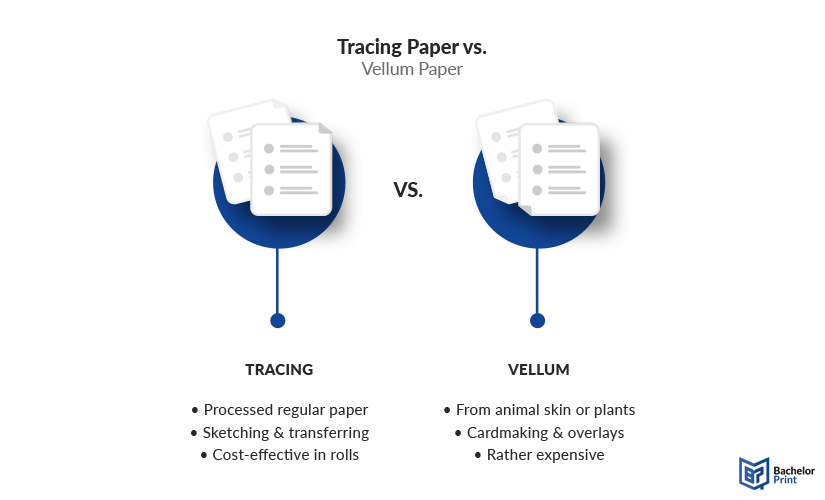
Alternatives
Below, you’ll find some alternative options you can use when you don’t have tracing paper or if it’s out of stock in a shop near you.
Wax paper is a slightly see-through paper that can be used for simple tracing tasks, though it may smudge and doesn’t handle pencil or ink as cleanly as tracing paper. Instead of having to wipe off the wax buildup, you can just use a pen that doesn’t work, since you only need it to scratch the wax.
Carbon paper is a black sheet that transfers ink or graphite to another sheet underneath. This type of paper is placed under the patterned paper, while the empty sheet is placed below. It can be used repeatedly and is quite durable, making it great for transferring drawings or patterns.
You can use simple parchment paper (baking paper) as a tracing paper alternative. Although the brown version works as well, using white parchment (non-stick) makes tracing easier.
If you have some tape at home and a clean window, you can simply tape your image to the window and tape another piece of paper over it. If the light shines through the window, you can now see the image well enough to trace it.
A lightbox or lightpad is a helpful device with illuminated panels (LEDs) that allows you to see through different layers of paper, making tracing and drawing easier. Typically, the larger the lightbox/lightpad, the lower the brightness.
High-quality color copies from just £0.15
- Choose from different paper formats & paper weights
- Configure finishing options & add any extras you need
- Easy online ordering process with delivery to your doorstep
Learn more!
How to use it
There are three popular ways of using tracing paper.
The three-step method
This is a classic and effective method.
- Pick up a soft pencil (e.g., a number two graphite or a watercolor pencil) and secure the tracing paper on top of the image you’d like to copy.
- You should be able to see the outline of the image so that you can then precisely trace it on the tracing paper, flip it over, and get your drawing paper.
- Place the tracing paper on top of the final drawing paper, secure it gently, and trace over the lines you originally drew. This will transfer the pencil marks onto your drawing paper.
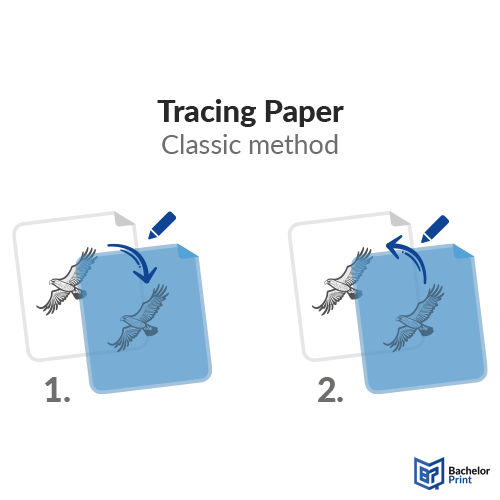
The scribble method
This technique is a bit quicker.
- Pick up a soft pencil (number two or softer) and place the tracing paper on top of the image you’d like to copy.
- Accurately trace the outline of the image on the tracing paper.
- Turn the tracing paper over and gently scribble over the lines with the side of the pencil point or a dark-coloured crayon.
- Place the paper with the scribble side down on your final drawing paper and apply pressure over the lines with the back of your pen. This presses the graphite onto the paper beneath.
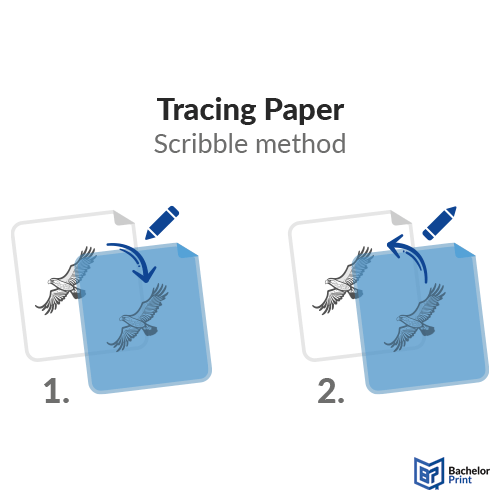
The DIY carbon paper method
This special technique needs a graphite pencil or a solid graphite block.
- Coat a sheet of tracing paper with graphite. This sheet can be reused by reapplying the graphite as needed. The drawing paper should be beneath the carbon paper.
- Place your DIY carbon sheet between your tracing and drawing papers. The graphite side should be facing the drawing surface. Now, you can start tracing the image, but watch out for smudges.
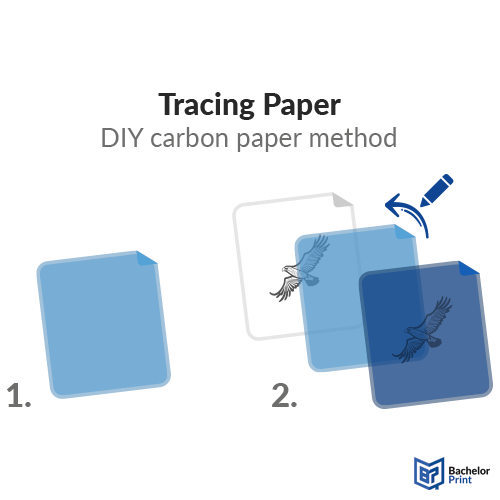
FAQs
Tracing paper can be used for copying, transferring, and layering images, designs, or patterns.
If you don’t have tracing paper at hand, you can also use:
- Wax paper
- Carbon paper
- A window and tape
- Lightbox or lightpad
- Baking paper or parchment paper
No, they’re not. Tracing paper is specifically made for copying and tracing. Parchment paper is coated to withstand heat and prevent sticking, but can also be used as an alternative for copying and tracing due to its semi-transparent look.
Tracing paper offers the following advantages:
- It often comes in rolls, making it cheap to buy.
- It works well with pencils, pens, inks, and markers.
- It’s useful for refining drawings or technical layouts.
- Transparency allows for easy image or design transfer.
- It’s ideal for stacking and adjusting parts of a design without redrawing everything.